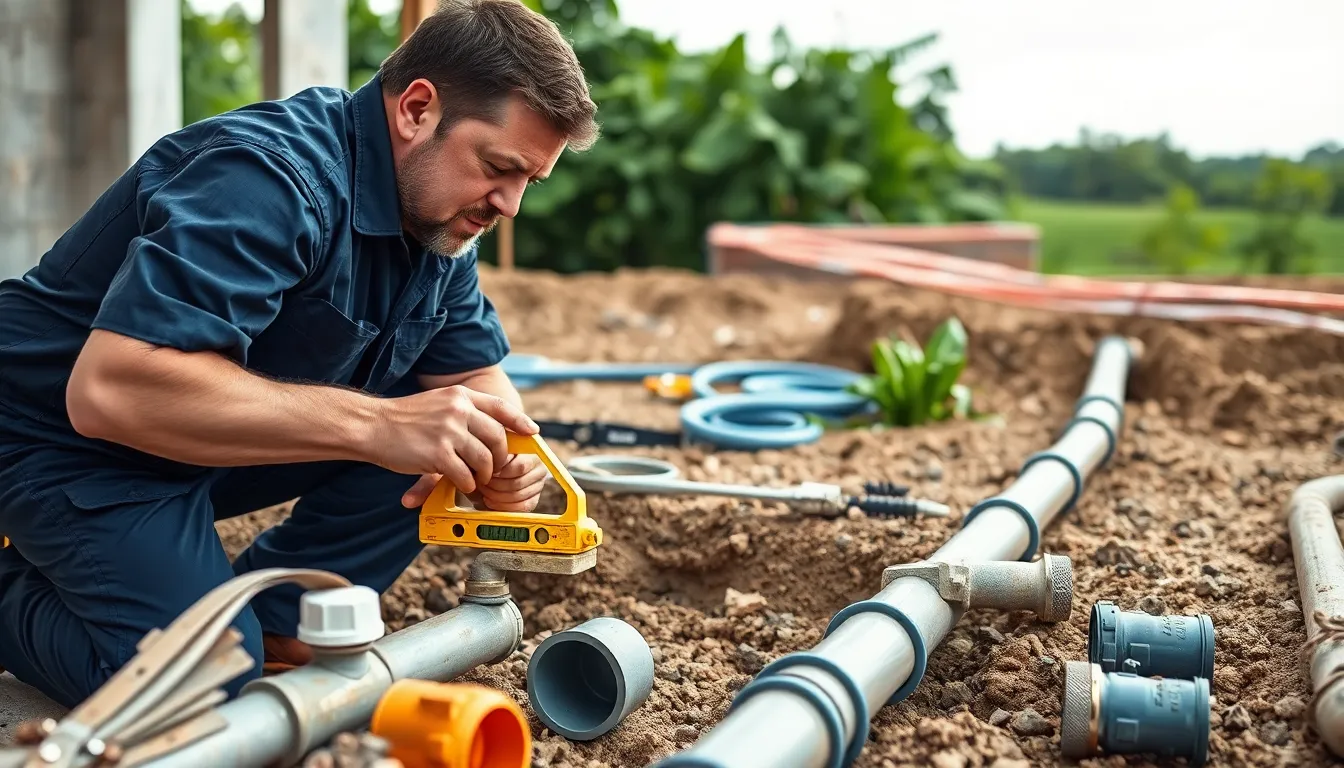Imagine waking up to the sound of dripping water, only to discover that your basement has turned into a miniature swimming pool. This scenario isn’t just a nightmare for homeowners; it highlights the crucial link between waterproofing and plumbing. In the Rio Grande Valley, where humidity can wreak havoc, understanding how these two elements interact can save property owners from costly repairs and headaches.
Waterproofing isn’t just about keeping water out; it’s about creating a safe environment for homes and businesses alike. With the right plumbing considerations, one can ensure that water flows where it should—through pipes, not through walls or floors. This article delves into essential waterproofing techniques and plumbing strategies that will help homeowners and property managers safeguard their investments while maintaining peace of mind. Ready to explore how a few smart choices can protect your property? Let’s dive in.
Understanding Waterproofing
Effective waterproofing plays a vital role in maintaining a safe environment and preventing water damage, particularly in the humid conditions of the Rio Grande Valley. Homeowners and businesses must implement solid waterproofing strategies to safeguard their properties.
Importance of Waterproofing
Waterproofing prevents moisture penetration, which can lead to mold growth, structural damage, and costly repairs. It creates a barrier that protects homes and commercial establishments from water intrusion, essential in areas prone to heavy rainfall. Proper waterproofing aids in preserving property value, enhancing living conditions, and ensuring long-term health safety for occupants.
Types of Waterproofing Methods
Various waterproofing methods exist, each suitable for different applications:
- Membrane Waterproofing: This involves using sheets or liquid membranes to create a protective layer over surfaces. It’s effective for external walls and foundations.
- Sealants and Coatings: Specialized sealants are applied to surfaces, filling cracks and preventing water leaks. Coatings provide an additional layer of protection against moisture penetration.
- Drainage Systems: Proper drainage directs water away from structures, alleviating potential pressure on walls and foundations. French drains and sump pumps are examples of effective drainage solutions.
- Cementitious Waterproofing: This method uses a cement-based mixture to create a waterproof barrier, ideal for basements and water tanks.
Understanding these waterproofing techniques helps protect properties effectively and minimizes potential disruptions in plumbing systems.
Plumbing Basics

Understanding plumbing systems is essential for maintaining a safe and functional property. Proper plumbing ensures efficient water flow and can prevent costly damages.
Key Components of Plumbing Systems
Key components of plumbing systems include pipes, fixtures, and fittings.
- Pipes transport water and waste. Common materials include PVC, copper, and PEX, each serving specific functions based on their durability and application.
- Fixtures like sinks, toilets, and faucets connect to the plumbing system, enabling the use of water for various needs.
- Fittings connect different sections of pipe and fixtures, ensuring leak-free joints and efficient flow.
Knowledge of these components aids in troubleshooting and planning for plumbing maintenance and upgrades.
Common Plumbing Issues
Common plumbing issues range from minor problems to significant repairs.
- Leaky faucets waste gallons of water daily and suggest a need for repairs.
- Clogged drains can result from debris accumulation, requiring effective drain cleaning and repair services.
- Running toilets waste water and often stem from faulty flapper valves or fill valves. Prompt attention can resolve this issue.
- Burst pipes can cause severe water damage and require immediate emergency plumbing to minimize destruction.
Identifying these problems early can save homeowners time and money while ensuring a reliable plumbing system.
Waterproofing and Plumbing Considerations

Waterproofing directly influences plumbing systems, especially in the humid conditions of the Rio Grande Valley. Effective waterproofing prevents water intrusion and promotes a safe, dry environment. Understanding the interplay between waterproofing and plumbing helps in safeguarding properties against damage and costly repairs.
Intersection of Waterproofing and Plumbing
Waterproofing and plumbing systems share critical connections. Proper waterproofing prevents moisture accumulation, reducing the risk of plumbing issues such as pipe corrosion and mold growth. Applying waterproofing measures around plumbing fixtures protects interiors from leaks and water damage. For instance, using sealants around pipe penetrations reinforces barriers against water seepage. Effective drainage systems are essential for directing water away from structures, minimizing stress on plumbing systems.
Best Practices for Integration
Integrating waterproofing and plumbing requires strategic planning. Key practices include:
- Evaluate Site Conditions: Analyze the property’s soil type and drainage patterns before installation. Understanding these factors aids in selecting the appropriate waterproofing techniques.
- Select Quality Materials: Use high-grade waterproofing membranes and sealants compatible with plumbing materials. Properly graded materials resist wear and ensure long-term performance.
- Schedule Regular Inspections: Conduct routine checks on plumbing systems and waterproofing mechanisms. Early identification of potential issues minimizes repair costs and enhances property durability.
- Collaborate with Professionals: Engage expert plumbing services for installation and maintenance. Experienced plumbers understand the nuances of integrating waterproofing with plumbing systems, ensuring reliable outcomes.
Understanding the relationship between waterproofing and plumbing is paramount for maintaining property integrity. Implementing best practices in both areas helps prevent future complications and enhances overall property safety.
Choosing the Right Materials
Selecting suitable materials is critical to achieving effective waterproofing and reliable plumbing systems. Multiple factors influence this choice, including climate conditions, application type, and specific project requirements.
Waterproofing Materials
- Membrane Systems: These provide a barrier against water intrusion. They suit various surfaces, such as foundations and basements.
- Sealants and Coatings: These flexible materials protect surfaces from moisture. They’re ideal for both interior and exterior applications.
- Drainage Systems: These facilitate the flow of water away from structures. Effective drainage minimizes water accumulation that can harm plumbing systems.
Plumbing Materials
- Pipes: High-quality options include PVC, CPVC, and PEX. Each option has unique benefits suited for different applications.
- Fittings and Fixtures: Opt for durable brass or stainless steel to ensure longevity and reduce leaks.
- Insulation: Insulating pipes prevents heat loss and condensation. This practice protects both plumbing and waterproofing systems from damage.
Considerations for Material Selection
- Durability: Choose materials that withstand local environmental conditions, such as humidity in the Rio Grande Valley.
- Compatibility: Ensure selected materials integrate with existing systems to maintain functionality and safety.
- Cost: While investing in quality materials may require a higher initial cost, they often provide better long-term value through reduced maintenance and repairs.
Incorporating suitable waterproofing and plumbing materials enhances property integrity, contributing to a safer living or working environment.
Expert Tips for Success

- Evaluate site conditions. Assess the landscape for drainage patterns and existing moisture issues. Proper evaluation ensures optimal waterproofing and plumbing performance.
- Select quality materials. Choose durable waterproofing membranes, sealants, and reliable plumbing materials like PVC and PEX pipes. Quality materials last longer and reduce maintenance needs.
- Implement drainage systems. Install effective drainage solutions to direct water away from structures. Systems like French drains and surface drains minimize water damage risks.
- Schedule regular inspections. Conduct thorough inspections of both waterproofing and plumbing systems at least yearly. Regular checks help identify issues early, preventing costly repairs.
- Incorporate insulation. Use insulation to protect pipes from temperature fluctuations. Insulating pipes properly reduces the risk of bursts during cold weather.
- Collaborate with professionals. Consult experienced plumbers and waterproofing specialists for complex projects. Expert insight ensures optimal integration between systems.
- Address plumbing issues promptly. Tackle common challenges, such as leaks or clogs, without delay. Early intervention prevents water damage and enhances system longevity.
- Practice proper maintenance. Maintain gutters, downspouts, and drainage systems to avoid water pooling around foundations. Routine cleaning promotes effective waterproofing.
These expert tips provide essential guidance for homeowners and property managers in the Rio Grande Valley, helping them achieve successful waterproofing and plumbing outcomes.
Conclusion
Effective waterproofing and plumbing are essential for maintaining a safe and functional property. By understanding the interconnectedness of these systems homeowners can make informed decisions that protect their investments. Choosing the right materials and implementing best practices can significantly reduce the risk of water damage and plumbing issues.
Regular inspections and prompt attention to problems are crucial in preventing costly repairs. Collaborating with professionals ensures that both waterproofing and plumbing systems are optimized for the unique conditions of the Rio Grande Valley. Prioritizing these considerations not only enhances property integrity but also fosters a healthier living environment. Smart choices today lead to lasting benefits tomorrow.
Frequently Asked Questions
What is the relationship between waterproofing and plumbing?
Waterproofing and plumbing are interconnected, especially in humid areas like the Rio Grande Valley. Effective waterproofing prevents water intrusion that can cause plumbing issues, such as pipe corrosion and mold growth, ensuring a safe and functional living environment.
Why is waterproofing important for homeowners?
Waterproofing is crucial for homeowners as it protects properties from water damage, prevents mold growth, and maintains structural integrity. Effective waterproofing contributes to a safer living environment and reduces the likelihood of costly repairs.
What are common waterproofing methods?
Common waterproofing methods include membrane waterproofing, sealants and coatings, drainage systems, and cementitious waterproofing. Each technique is designed to address specific waterproofing needs, helping to protect properties from water-related issues.
How can plumbing issues arise from poor waterproofing?
Poor waterproofing can lead to moisture accumulation, which may cause plumbing problems like pipe corrosion, leaks, and mold growth. These issues can hinder plumbing system functionality and lead to expensive repairs.
What materials are recommended for waterproofing?
Recommended waterproofing materials include membrane systems, sealants and coatings, and effective drainage systems. Choosing the right materials enhances durability and compatibility, ultimately leading to better protection against water damage.
How can homeowners maintain their plumbing systems?
Homeowners can maintain their plumbing systems by identifying issues early, addressing leaks promptly, and scheduling regular inspections. Proper maintenance of gutters and drainage systems is also essential in preventing plumbing complications.
What are the key components of a plumbing system?
Key components of a plumbing system include pipes, fixtures, and fittings. Understanding these elements helps homeowners recognize and manage common plumbing issues, ensuring a reliable system.
How do drainage systems support waterproofing?
Drainage systems play a vital role in waterproofing by directing water away from structures. They prevent water pooling around foundations, thereby reducing the risk of water damage and maintaining the integrity of both waterproofing and plumbing systems.
Why should I collaborate with professionals for waterproofing and plumbing?
Collaborating with professionals ensures that waterproofing and plumbing work is performed correctly. Experts can assess site conditions accurately, select quality materials, and implement best practices to protect your property effectively.
What expert tips can help with waterproofing and plumbing?
Key expert tips include evaluating site conditions for drainage patterns, choosing quality materials, implementing effective drainage systems, scheduling regular inspections, and addressing plumbing issues promptly for long-term success.

